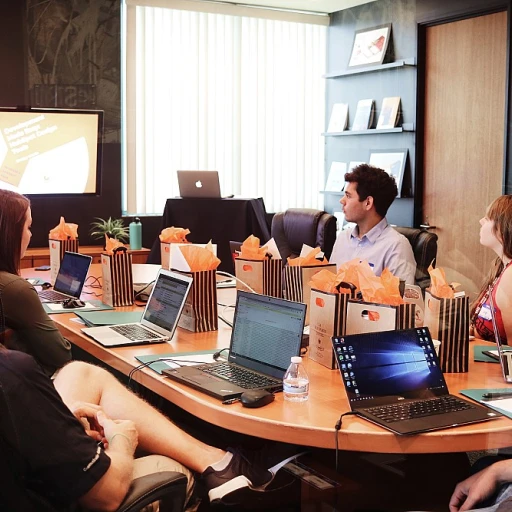
Understanding the Importance of Technical Competence
Gaining a Competitive Edge through Technical Skills
In today's fast-evolving job market, the significance of technical competence cannot be overstated. As industries change, the thirst for up-to-date technical skills continues to grow. Professionals are increasingly required to adapt their competencies to keep up with the ongoing technological advancements, which not only enhance individual proficiency but also contribute to the overall organizational success.
Technical competencies offer a myriad of advantages, from heightened job security to brighter career prospects. It's essential to understand that technical competency goes beyond just having knowledge. It encompasses the ability to analyze data, apply that understanding in practical scenarios, and make well-informed decisions that drive successful outcomes. The specific competencies required vary depending on several factors, including industry trends and company needs.
For individuals embarking on a new career path, bridging the gap between existing skills and required capabilities is crucial. A well-thought-out learning development plan can bolster your competency model, ensuring that your skills meet the proficiency levels expected by modern employers. This involves not just acquiring new skills but also refining existing ones to match advanced technical competencies.
Discovering the right blend of general and specific technical competencies requires meticulous planning. Investing in professional development is indispensable, enabling you to stay abreast of the latest tools and technologies that influence performance management and efficiencies within your job role. As you'll explore in other sections, knowing how to analyze these needed changes and incorporating them into a comprehensive learning framework is fundamental to achieving your career goals.
To start building a comprehensive database of your skills, check this informative resource. It will guide you in accurately mapping your career journey.
Identifying Skills Gaps and Setting Goals
Pinpointing Your Competency Shortfalls and Charting Your Future
Embarking on a journey to enhance your technical skills involves an honest assessment of your current competencies and identifying those areas that could benefit from further development. To get a clear picture, you should begin by conducting a gap analysis to determine which technical competencies are required for your desired career path. This process comes in handy when figuring out the specific skills you need to acquire or improve.
To start, it's crucial to analyze the job market and understand the demand for certain technical skills. Check job postings, network with professionals, and engage in discussions within industry-specific forums to gather insights. These activities will help paint a clearer picture of the skills employers are currently seeking.
Set Financial and Proficiency Goals
Having identified the skills you need, it’s vital to set clear, manageable goals. Determine whether you need to build your skills knowledge through formal education such as certifications, workshops, or online courses, or whether hands-on experience such as internships or volunteering might be more beneficial. This process is part of a comprehensive competency model that will guide your progress.
It's important to think about how you will measure progress as your proficiency levels increase. Using a performance management tool or keeping a detailed skills diary can track your development over time. Remember, setting both short-term and long-term targets will help you stay focused and motivated.
Tailoring Your Learning Plan to Fit Your Needs
Before jumping into the learning phase, it’s crucial to decide how you want to learn. Would you thrive better with self-paced courses, or do you require a structured environment facilitated by a mentor? Time management and resources play a pivotal role in ensuring that you can commit to a learning development plan that suits you best.
Setting up these personalized learning paths not only aids in content creation but also fosters an environment for effective decision-making during your reskilling journey. When making these decisions, consider using competency-based tools to allow for a more personalized approach to your education.
Understanding the differences between platforms like Guild and Upskillcom can further assist in choosing a training ground that best fulfills your aspirations. Dive deeper into the understanding of the differences between Guild and Upskillcom to see where your strategy best fits.
Choosing the Right Learning Resources
Finding the Right Tools for Your Learning Journey
Navigating the path of reskilling requires a strategic approach to education and skill development. Selecting the right learning resources is crucial for achieving your desired proficiency levels. As you embark on this journey, consider the plethora of tools available to help you enhance your technical competencies.
Firstly, assess your learning objectives based on the skills gaps you have identified. Whether you're aiming to improve general technical competencies or gain expertise in specific areas, pinpointing your needs will guide your resource selection process.
- Online Platforms: Utilize platforms that offer a variety of courses tailored to different proficiency levels. Look for those that incorporate practical experience to ensure you're not just gaining theoretical knowledge.
- Learning Management Systems (LMS): Adopt an LMS that provides structured course content and is recognized for its effectiveness in facilitating professional development.
- Workshops and Bootcamps: These intensive programs can offer hands-on experience and accelerate your learning development, especially in technical competency fields.
- Industry Certifications: Consider certifications as they demonstrate your commitment to acquiring specific technical competencies, enhancing your job market value.
Choosing the resources that align with your needs is a step toward building a robust competency model. Empower yourself through informed decision-making, and continue your education journey with dedication and precision. By doing so, you set the stage for a successful integration of new skills and knowledge into your professional activities.
Practical Strategies for Effective Learning
Maximizing Your Learning Outcomes
When embarking on the path of enhancing your technical competencies, adopting practical strategies for effective learning is essential. These strategies not only help simplify complex concepts but also elevate proficiency levels and ensure the right application of skills in the professional arena.- Incorporate Active Learning: Your education should be more than passive absorption. Employ active learning techniques, like interactive assignments and problem-solving scenarios, to boost your technical competence. This approach encourages the application of knowledge skills in real-world contexts.
- Utilize Diverse Learning Modalities: Each individual has unique preferences in terms of acquiring information. Some might benefit from visual content such as videos and infographics, while others might prefer textual content. Embrace these diverse methods of information presentation to support your competency-based development.
- Leverage Practical Experience: Theory alone isn't enough. To truly master technical competencies, practical experience is indispensable. Engaging in simulated work environments or undertaking project-based tasks helps solidify your skills and improve your technical competency.
- Organize Knowledge for Retention: Structure your learning content effectively to manage information and prevent overwhelm. Organizing notes and using learning management tools can help you retain information and systematically build your knowledge base.
- Engage in Constant Evaluation: Regularly assess your progress in acquiring new competencies. This not only ensures that you're on track with your education goals but also helps analyze data to refine your learning strategies. Competency models can guide you in evaluating proficiency levels accurately.
Overcoming Challenges in Reskilling
Facing the Hurdles of Reskilling
Reskilling can be a daunting journey, especially when it involves acquiring new technical competencies. However, understanding the common challenges and how to overcome them can make the process smoother and more rewarding.
Time Management and Commitment
One of the primary obstacles in reskilling is managing time effectively. Balancing work, personal life, and learning can be overwhelming. To tackle this, create a structured schedule that allocates specific time slots for learning development. This not only helps in maintaining consistency but also ensures that you dedicate sufficient time to enhance your technical competence.
Staying Motivated
Maintaining motivation throughout your reskilling journey is crucial. Set realistic goals and celebrate small achievements to keep your spirits high. Engaging with a community or finding a study partner can also provide the necessary support and encouragement. Remember, professional development is a marathon, not a sprint.
Access to Quality Resources
Finding the right learning resources is essential for building your skills knowledge. With numerous content creation platforms available, it can be challenging to choose the right one. Evaluate resources based on their relevance to your specific job goals and the proficiency levels they offer. This ensures that you are investing your time in content that truly enhances your technical competencies.
Practical Experience
Theoretical knowledge is important, but practical experience is what truly solidifies your learning. Seek opportunities to apply your new skills in real-world scenarios. This could be through internships, volunteer work, or personal projects. Practical experience not only boosts your confidence but also enhances your technical competency model, making you more attractive to potential employers.
Adapting to New Technologies
Technology is ever-evolving, and staying updated with the latest tools and trends is a challenge in itself. Regularly analyze data and trends in your field to keep your knowledge current. This proactive approach ensures that your technical competencies remain relevant and aligned with industry standards.
By addressing these challenges head-on, you can effectively navigate the reskilling process and emerge with a robust set of technical competencies that open doors to new career opportunities.
Showcasing Your New Skills to Employers
Demonstrating Your Technical Proficiency
Once you've invested time and effort into reskilling, it's crucial to effectively showcase your new technical competencies to potential employers. Highlighting your proficiency levels and the specific skills you've developed can set you apart in a competitive job market.
Crafting a Compelling Resume
Your resume is often the first point of contact with employers, so it should clearly reflect your technical competence. Include a dedicated section for technical skills, listing both general competencies and specific technical competencies. Use a competency-based approach to describe your achievements and how they align with the job requirements. Tailor your resume to each job application, emphasizing the skills and knowledge that are most relevant to the position.
Building an Online Portfolio
An online portfolio can be a powerful tool for showcasing your work and technical proficiency. Include examples of projects that demonstrate your skills in content creation, data analysis, or any other relevant areas. This not only provides tangible evidence of your abilities but also shows your commitment to professional development and continuous learning.
Leveraging Professional Networks
Networking is an essential part of the job search process. Engage with professional organizations and online communities related to your field. Share your learning journey and the new skills you've acquired. Participating in discussions and contributing valuable insights can enhance your visibility and credibility in the industry.
Preparing for Interviews
During interviews, be prepared to discuss your learning development journey and how you've applied your new skills in practical scenarios. Use specific examples to illustrate your technical competency and decision-making abilities. Employers are often interested in how you can apply your knowledge and skills to solve real-world problems.
Continuous Learning and Adaptation
Finally, emphasize your commitment to ongoing education and skill development. The landscape of technical skills is constantly evolving, and showing a willingness to adapt and grow can make you a more attractive candidate. Keep abreast of industry trends and continue to refine your competencies to maintain a competitive edge.













